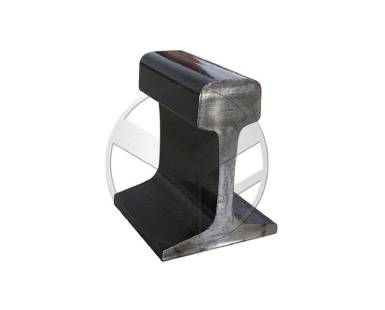Home >> News >> Latest News
The role of Heavy Rail is to directly bear the weight of the train and its load transmitted by the wheels, and guide the train's running direction. Such a huge pressure first falls on the shoulders of the rail. It can be seen that the rail must have sufficient strength, stability and wear resistance. The I-shaped cross section of the rail is composed of the rail head, rail waist, and rail bottom. This seemingly simple I-beam has good strength, saves material, and has the best bending resistance. The type and strength of the rail are expressed in kg / m. The heavier the mass per meter of rail, the greater the load it will bear. In order to improve the capacity of the line, heavy rails are usually laid on the main lines.

Heavy Rail
Theoretically, the longer the length of the rail, the better, which not only reduces the impact and wear of the joint, but also reduces the labor intensity of laying. However, due to production and transportation constraints, China's current standard rail lengths are only 12.5m and 25m. However, railway employees have adopted the method of welding standard length rails to long rails and "seamless" rails at the construction site to reduce joints and make the line smoother. This is because the rails of high-speed railways all use "seamless rails", which means that there are no gaps between the rails, and the train runs more smoothly and safely. Trains, trains, and high-speed rails are all the means of transportation commonly used for travel. Attentive friends must have found that many steel rails are rusty. In fact, this is a characteristic of the rail itself. When it leaves the factory, it is rusty. The friction of the train running on it will cause the worn rail surface to become shiny. The rails of high-speed rail, trains and most trains are made of high-manganese steel. High-manganese steel has high hardness and wear resistance. Even if its rust and wear are replaced, it is still a good material for other industries.
The high-speed rail's Seamless Rails require workers to cut them down and weld them up again. The replaced steel rails can be sawn again, made into guard rails, fasteners, etc., and returned to the railway.
Heavy rail breaking refers to one of the following situations: the rail's full section is broken into at least two parts; the crack has penetrated the entire rail head section or rail bottom section; there are falling blocks longer than 50mm and deeper than 10mm on the top surface of the rail. Rail breakage directly threatens driving safety and should be replaced in a timely manner. Rail cracks mean that apart from the fracture of the rail, part of the rail material is separated and cracks are formed.
The weight of the train and its load, and guide the direction of the train. Taking the train train of 60 60-ton open cars as an example, its weight increases to about 5,000 tons, let alone those heavy-duty trains of 10,000 tons or even 100,000 tons. Such a huge pressure first falls on the shoulders of the rail. It can be seen that the rail must have sufficient strength, stability and wear resistance.
Dynamic and non-dynamic causes of heavy rail. In general, the dynamic effect is the external cause of rail wave grinding, and the material properties of the rail are the internal cause of wave grinding. In fact, it is quite difficult to summarize all the causes of rail wave grinding based on a certain aspect of analysis. It is necessary to treat vehicles and rails as a system, study the formation of various vibrations, and conduct multifaceted and multidisciplinary research as a whole. In order to grasp the full picture of the causes of wave grinding.
The above is the relevant knowledge of heavy rail introduced by Steel Rail Manufacturers. Hope to help you.

Leave a message